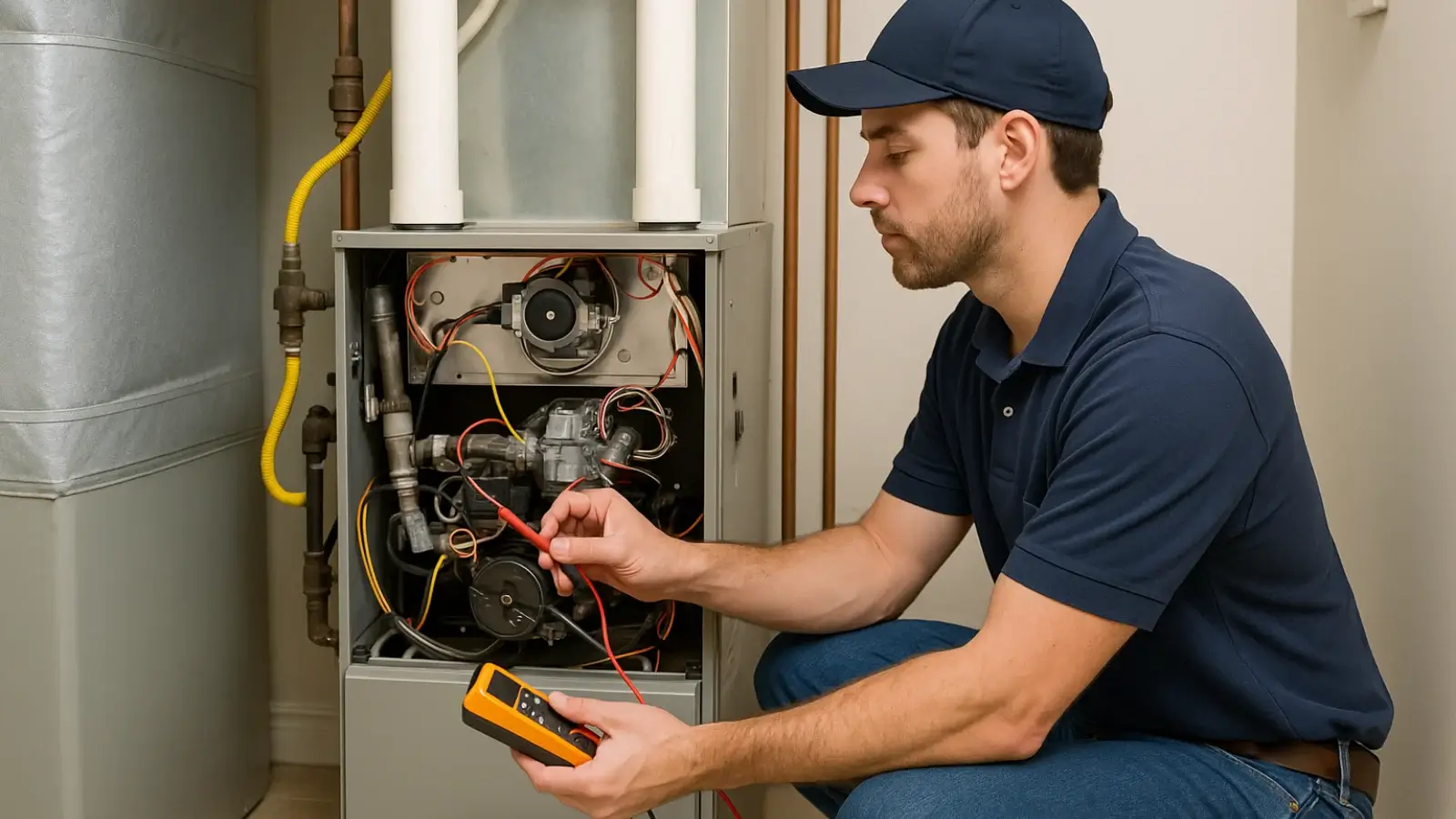


When your furnace starts acting up, your first thought is probably how to get it fixed fast. But whether it’s a minor hiccup or a full system breakdown, what you do before and after a furnace repair visit can make a major difference in how smoothly the process goes—and how well your system performs after.
Calling a qualified HVAC contractor is the right first step, but your involvement doesn’t stop there. Preparing the space, asking the right questions, and following up correctly can help you get the most from your appointment and prevent future issues.
Use this two-part checklist to get ahead of the game and stay warm through winter’s worst.
Don’t rely on memory. Before the technician arrives, jot down:
When the issue started
What noises, smells, or behaviors you’ve noticed
If it occurs only during certain times of day or settings
Whether your thermostat is responding correctly
This helps your HVAC contractor replicate the problem faster, saving diagnostic time and ensuring the correct fix.
Remove boxes, furniture, and storage bins that block access to your furnace. This helps the technician move freely and safely. Aim for at least 3 feet of clearance around the unit.
If the furnace is in a basement, make sure stairs and access paths are free of clutter and well-lit. A smooth workspace allows for a quicker and more focused repair.
Sometimes the problem isn’t mechanical—it’s airflow. Dirty filters can cause overheating, cycling issues, and reduced efficiency. If yours hasn’t been changed in the last 30–60 days, go ahead and replace it.
If you’re unsure how to do this, leave it in place so your technician can inspect and guide you during the visit.
Even the friendliest pets can become anxious around strangers, loud tools, or open doors. Make arrangements to keep them in a secure room or crate during the visit.
It ensures the technician can focus on the job—and keeps your pets safe from exposure to tools or heated components.
You might not think your cooling system matters during a furnace repair, but many HVAC systems are interconnected—especially if you use a heat pump or shared air handler.
Mention recent AC repair or airflow problems, as they could be linked to your current heating issues.
In some cases, the issue isn’t the furnace itself—it’s the thermostat. Having your manual handy can speed up troubleshooting, especially if you use a smart or programmable model.
Can’t find it? No problem—write down the brand and model number so your tech can look it up quickly.
When the technician arrives, you’ll want to ask:
Is this a one-time issue or a recurring warning sign?
What can I do to avoid this problem in the future?
Should I schedule any follow-up maintenance?
This ensures you walk away not just with a fix—but with the knowledge to keep your system running efficiently.
Once the tech has completed the repair and left, give the system a full test cycle. Adjust the thermostat, wait for the furnace to kick on, and monitor the airflow, noise levels, and temperature consistency for at least 30–60 minutes.
This helps you catch any lingering issues early and provides peace of mind.
Some furnace repairs involve working with combustion components, electrical wiring, or old filters. After the visit, check nearby surfaces for leftover dust or tool residue.
A mild metallic or warm “burn-off” smell is normal for a few hours after repair—but anything smoky, electrical, or gassy should be reported immediately to a professional (or plumber, in cases of gas line issues).
Write down the service date, parts replaced, and technician notes. Keeping a simple maintenance log helps identify patterns over time and can be valuable if you ever need warranty support or future diagnostics.
Many homeowners forget what’s been done—and end up repeating service calls or ignoring important indicators. A quick note in your phone or a folder can save you time later.
After a furnace repair, revisit your thermostat program. Some repairs may reset settings or affect the way your system responds to scheduling.
Ensure your weekday and weekend preferences are set correctly and that temperature changes occur gradually—not in big, energy-draining spikes.
If your furnace vents outside, make sure snow, leaves, or debris haven’t blocked the vent pipe. Restricted airflow can strain a newly repaired system and create safety hazards.
This is especially important in winter when snowdrifts or frozen rain can pile up overnight. Take a quick walk around your home’s exterior to confirm all vents are clear.
If your repair was caused by a clogged filter, dirty burners, or poor airflow, your technician may recommend scheduling follow-up service.
Don’t delay—book a maintenance visit with your local HVAC contractor to avoid future breakdowns.
Furnace systems benefit greatly from regular tune-ups, just like cars. And early attention can prevent larger issues from taking root—especially during peak heating seasons.
Companies like Nardco Heating & Air Conditioning help homeowners create seasonal service plans tailored to the age and performance of their systems, so you’re not caught off guard again.
Furnace repairs can feel disruptive—but with the right prep and follow-up, they become just another part of smart home maintenance. Taking a proactive role before and after the technician arrives helps you maximize the repair's value, improve system efficiency, and stay ahead of future issues.
Because when winter weather strikes again, the last thing you want is to wonder if your fix will hold.
With just a little planning and the right support team, staying warm becomes one less thing to worry about.